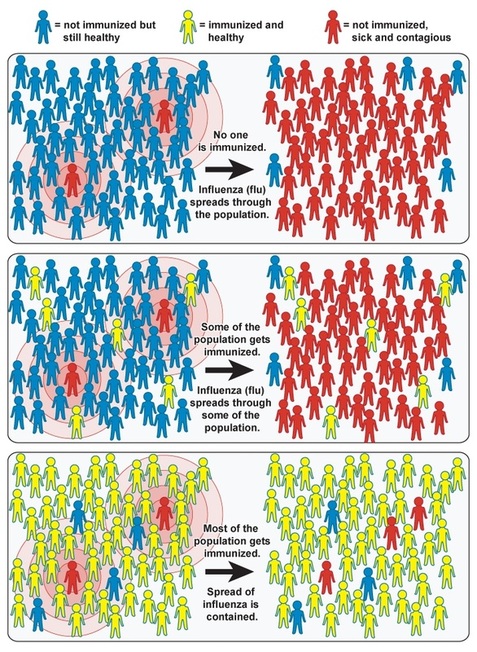Vaccines work by helping the body to create immunity to pathogens. They imitate an infection so the body can create T-lymphocytes, B-lymphocytes (types of white blood cell) and antibodies to specific pathogens. They rarely cause illness but some people may experience mild symptoms such as fever after a vaccination, this is normal and should be expected as the body builds immunity.

Image Source: Testa, J. S., & Philip, R. (2012). Role of T-cell Epitope-Based Vaccine in Prophylactic and Therapeutic Applications. Future Virology, 7(11), 1077–1088. https://doi.org/10.2217/fvl.12.108
Herd Immunity
We said earlier that the three principle aims of vaccination were to:
- Protect the individual who recieves the vaccine
- Prevent outbreaks of disease
- Eradicate infectious diseases world-wide
It's easy to see how vaccination creates aims 1 and 2 but for aim 3 to happen we also need to conside the people in the population that cannot be vaccinated. Vaccination can protect these people by creating herd immunity. This works on the priniciple that not only are vaccinated people unlikely to get the disease in question but they are also less likely to be a source of infection for others.You can see how herd immunity works in the diagram below.
Once herd imunity is created in a population, disease spread is reduced and we are one step closer to eradicating the infectious disease altogether.

Image Source: What is Herd Immunity? | NOVA | PBS
